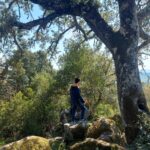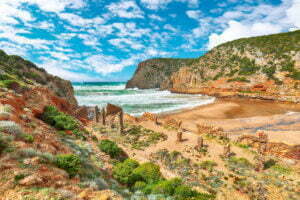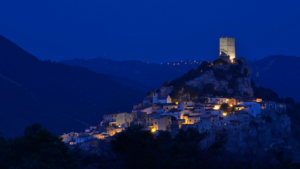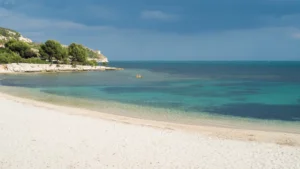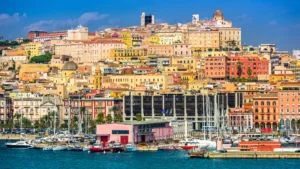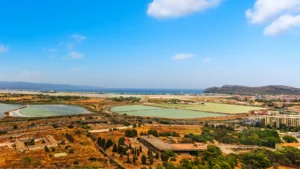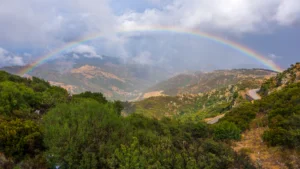In the wild heart of Sardinia, where time seems to have slowed its incessant ticking, monuments that tell stories of a distant era, but still vibrant in its silent narrating, rise. We are here to guide you on a journey through the centuries, in a land where stones speak and ancient legends come to life. Welcome to the fascinating world of the Domus de Janas, the mysterious “Fairy Houses” that guard the secrets of an ancient and fascinating civilization.
Main Sites to Visit
Sardinia, a land of mysteries and ancient civilizations, hosts a series of Domus de Janas, fascinating testimonies of a distant past. Here is a guide to the main sites you can visit to immerse yourself in the magic of these ancient structures:
Tomb of Genna Salixi
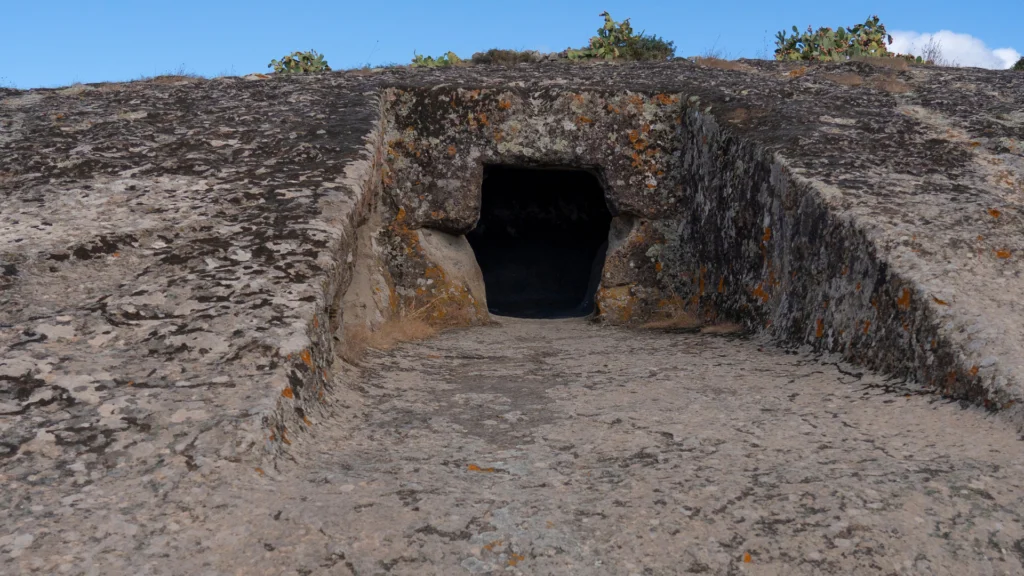
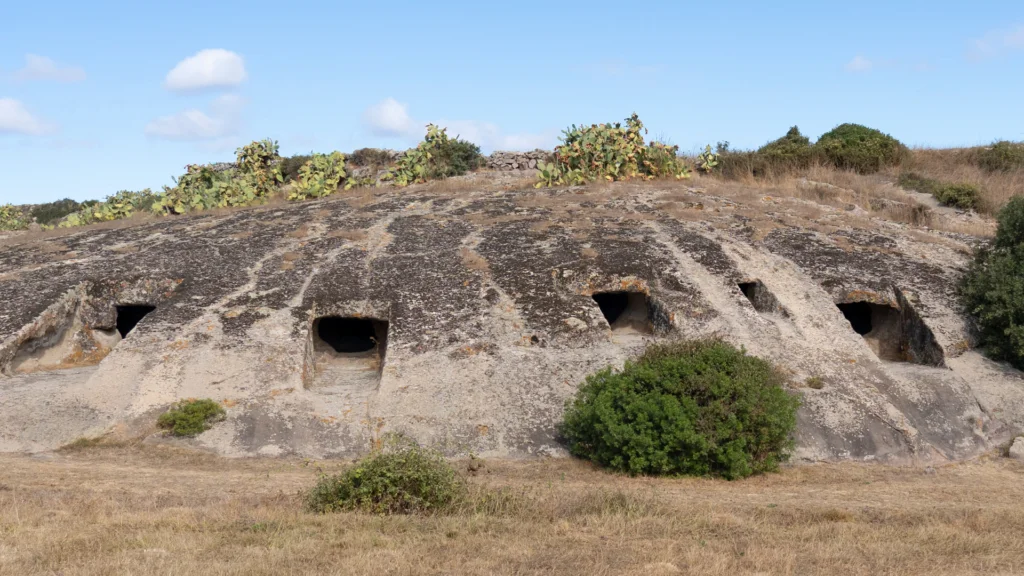
Located near Ittiri, the Tomb of Genna Salixi is a splendid example of Domus de Janas, showcasing interconnected chambers and a finely decorated façade, a testament to the artistic and architectural mastery of ancient Sardinian civilizations.
Necropolis of Sant’Andrea Priu
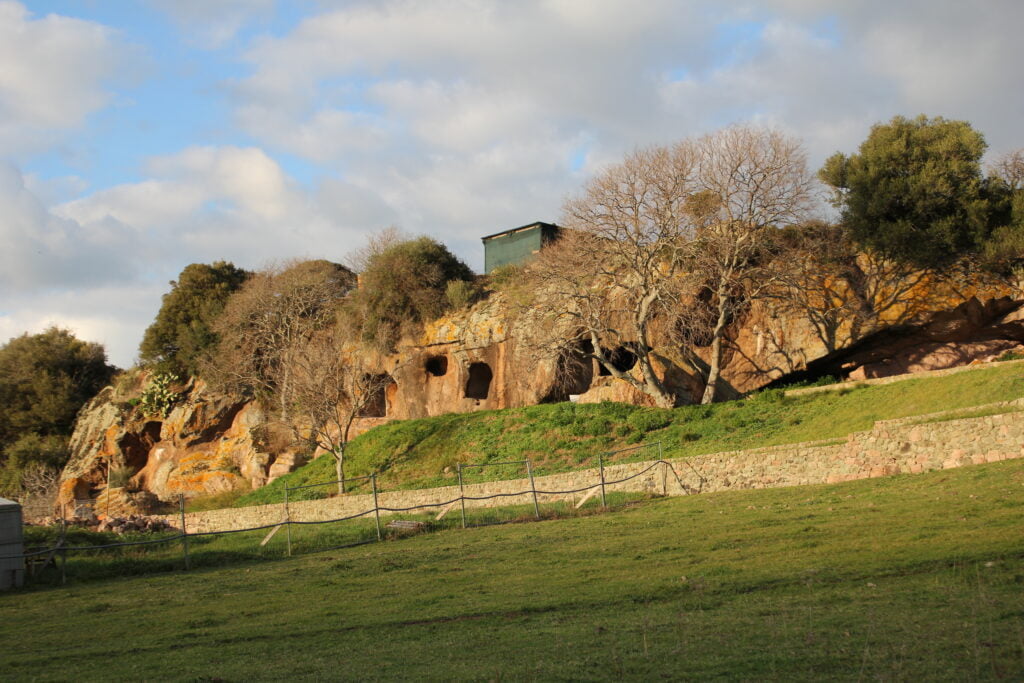

Situated in the municipality of Bonorva, this necropolis is renowned for the “Tomba del capo,” one of the largest in the Mediterranean with its 18 chambers.
Hypogeum complex of Anghelu Ruju
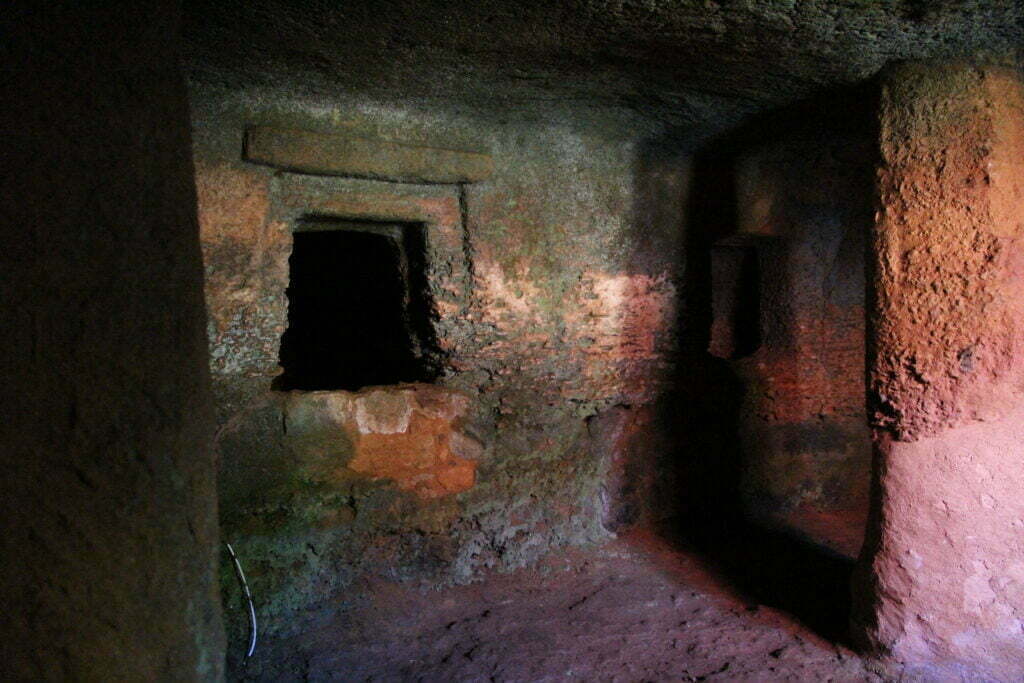

Located north of Alghero, this is the largest complex of pre-Nuragic Sardinia, consisting of two groups of Domus de Janas, one with 7 units and the other with 31. It’s open to the public daily.
Domus de Janas of Cardedu (Arista Mountain)
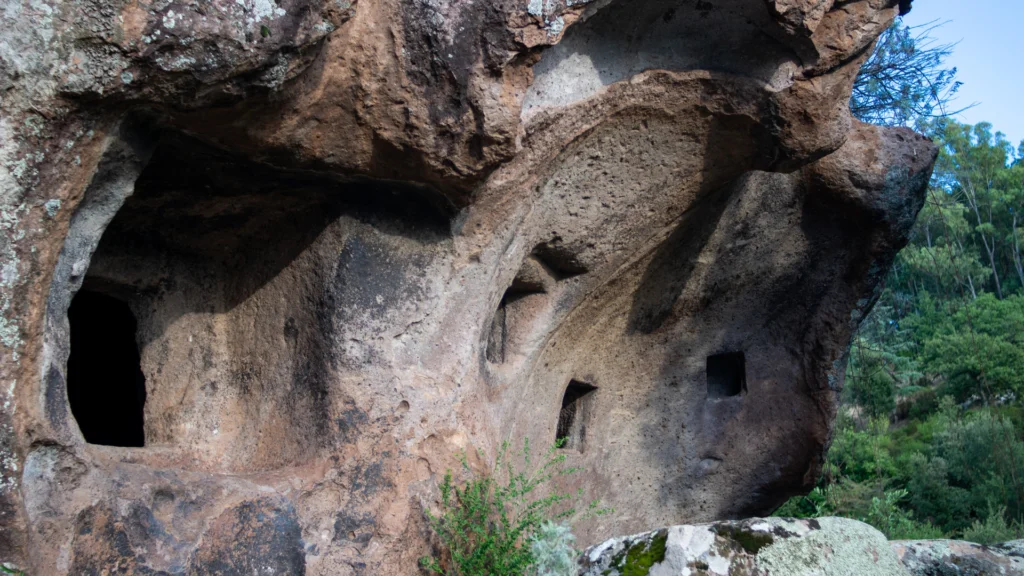

Situated in the Ogliastra region, these Domus de Janas offer a fascinating glimpse into the ancient pre-Nuragic civilization with their meticulously made and well-preserved tombs.
Necropolis of Monte Siseri
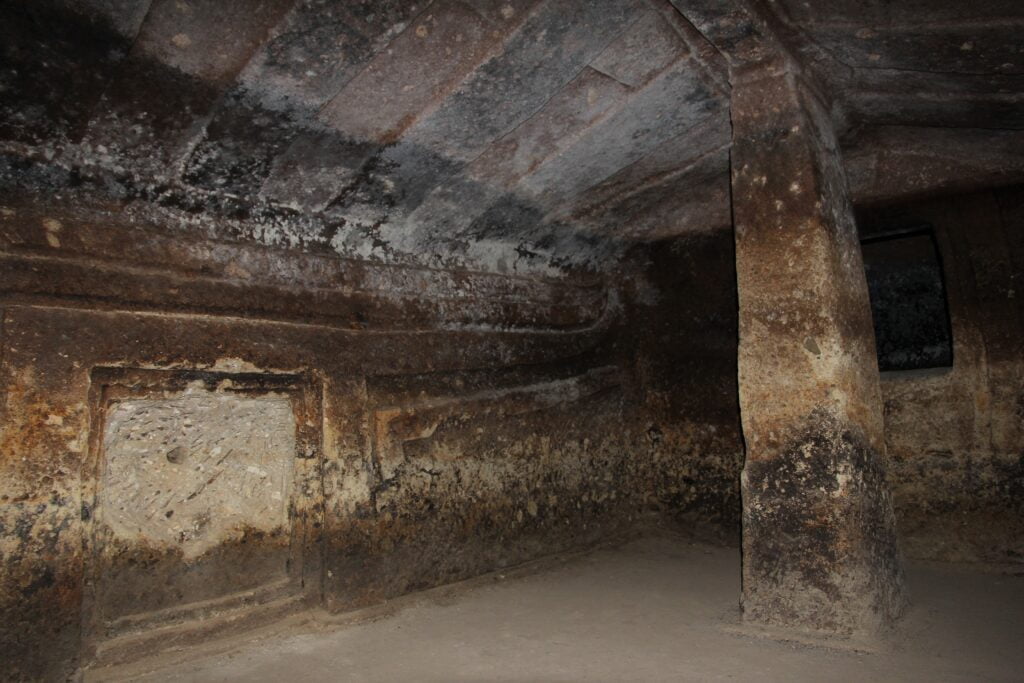

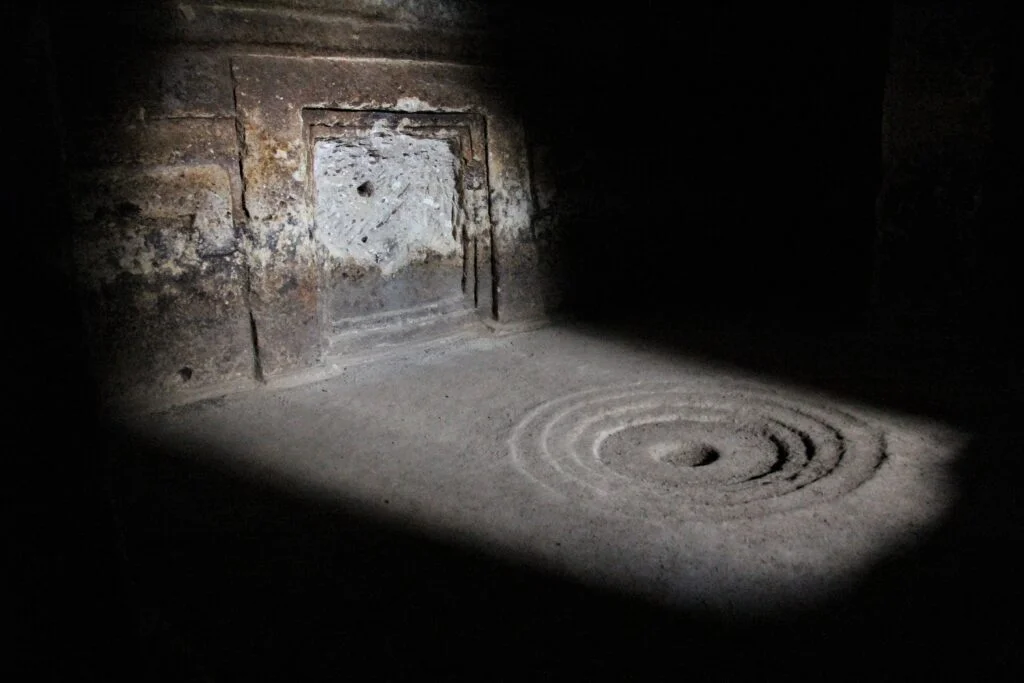

In Putifigari, this necropolis is known for its fascinating decorations, particularly in the domus known as “de s’incantu,” and is always accessible to visitors.
Domus de Janas of Sedini
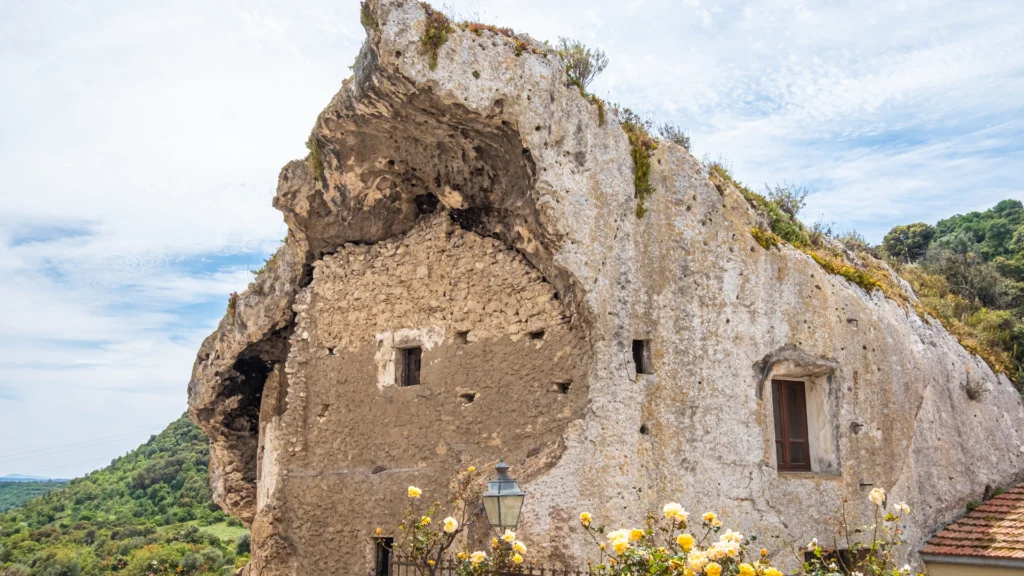

Also known as “La Rocca,” located in the historic center of Sedini, this domus is distinguished for its unique features.
Necropolis of Mesu ‘e Montes
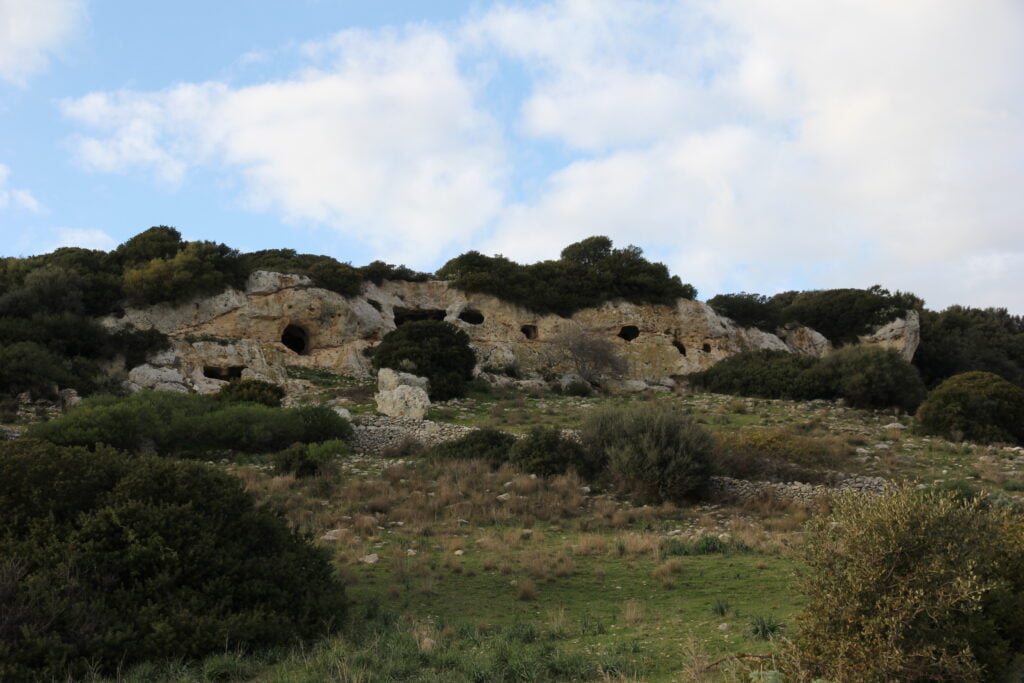

Located in Ossi, it offers a breathtaking view of the valley below, effectively reproducing the peculiarities of pre-Nuragic dwellings.
Necropolis of Su Crucifissu Mannu
Situated in the Nurra region, this necropolis includes at least 22 domus de janas with multiple connecting rooms, offering a captivating journey through time.
Domus of the Elephant (Sa Pedra Pertunta)
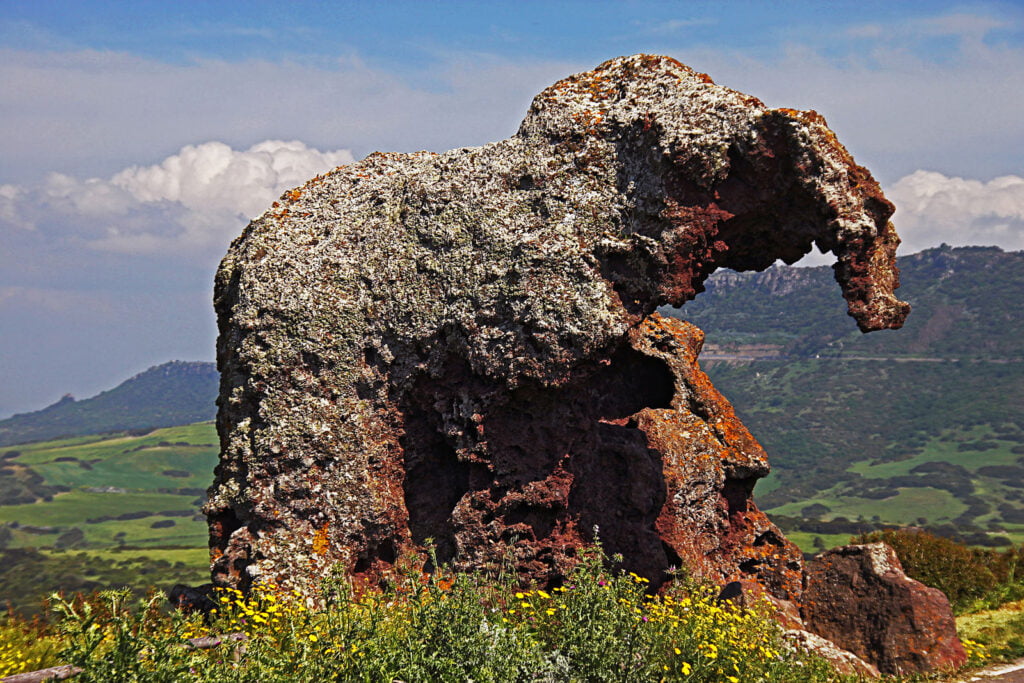

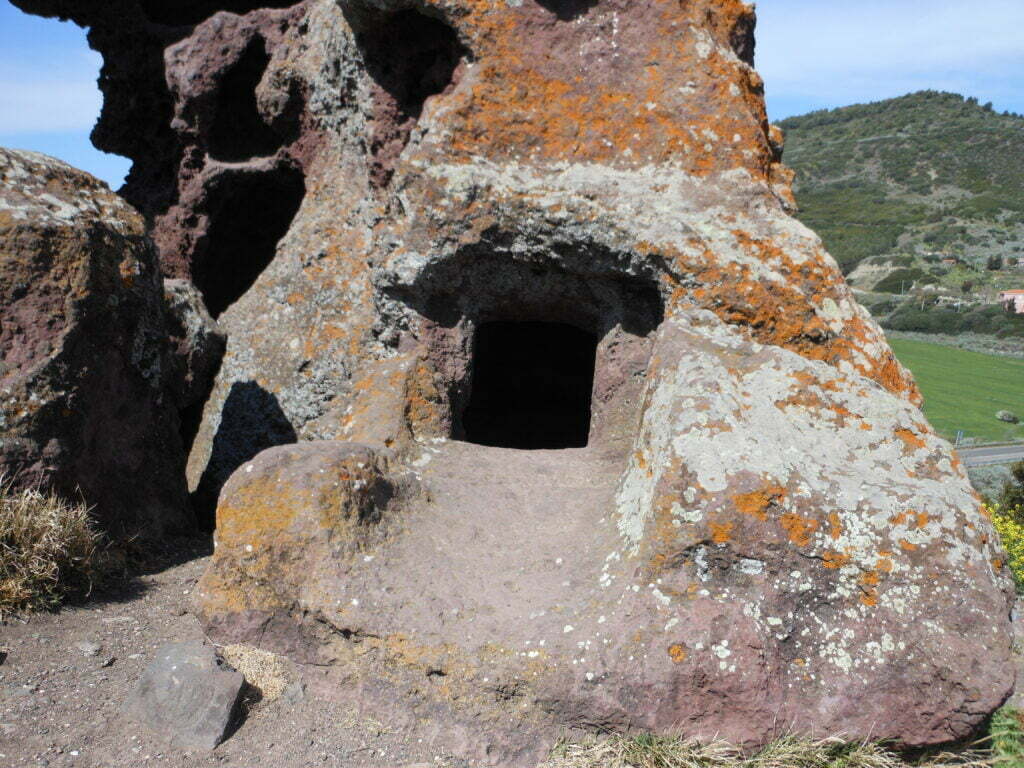

Famous for its shape resembling a seated elephant, this site in Castelsardo offers a unique and memorable visit.
Necropolis of Puttu Codinu
Located in Villanova Monteleone, this recently discovered necropolis houses 9 hypogeic tombs, offering an intriguing insight into the past.
Necropolis of Montessu
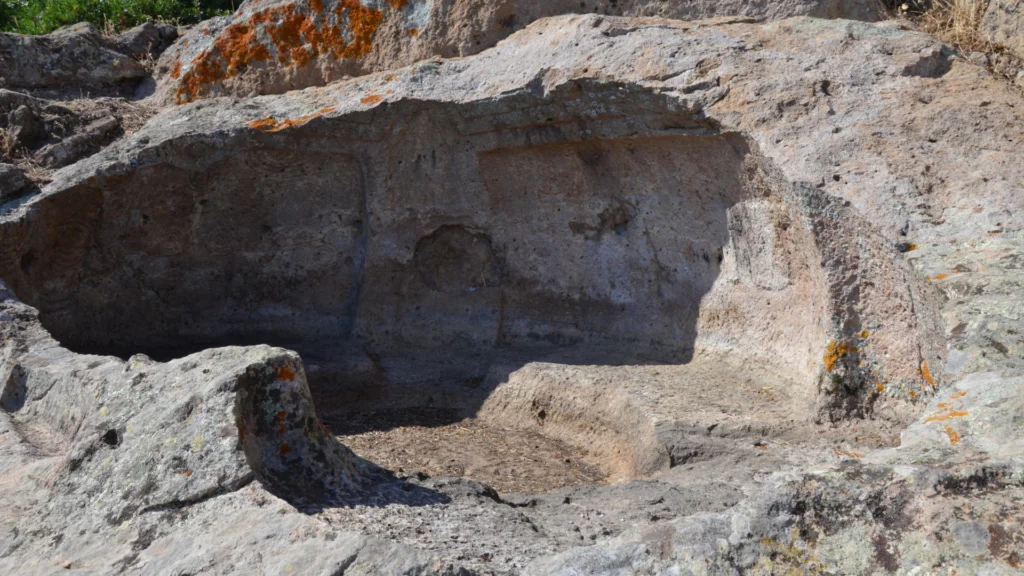

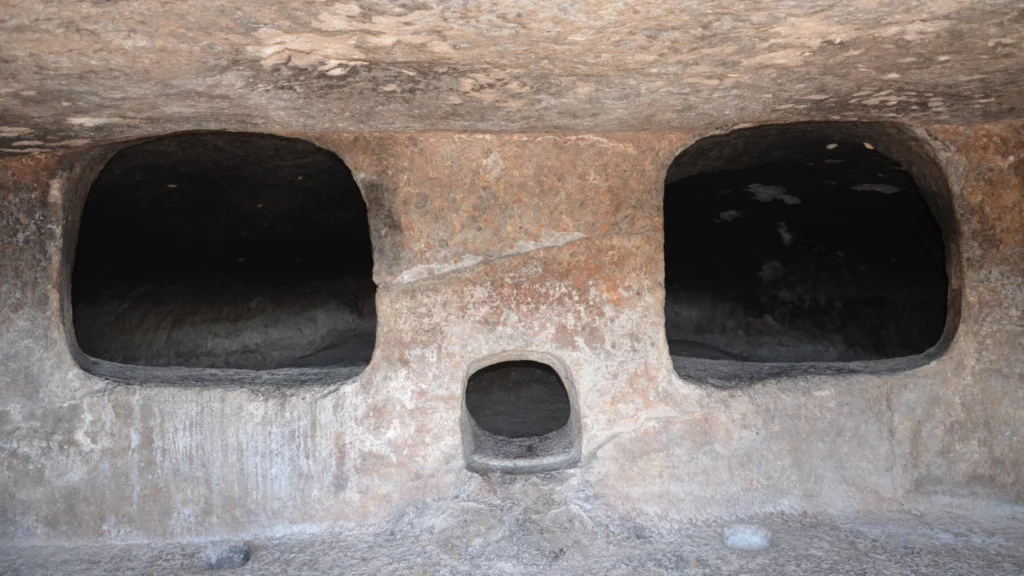

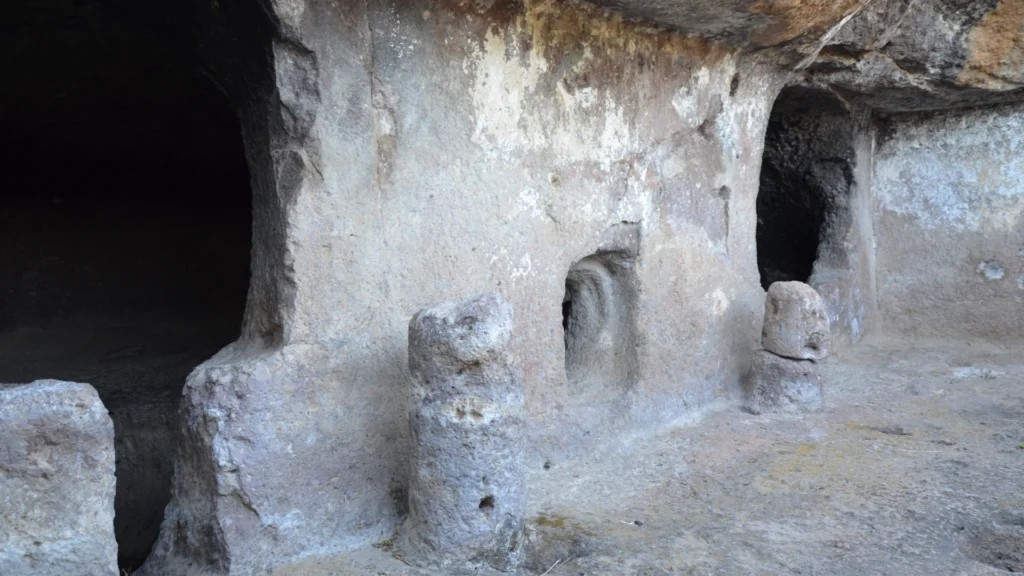

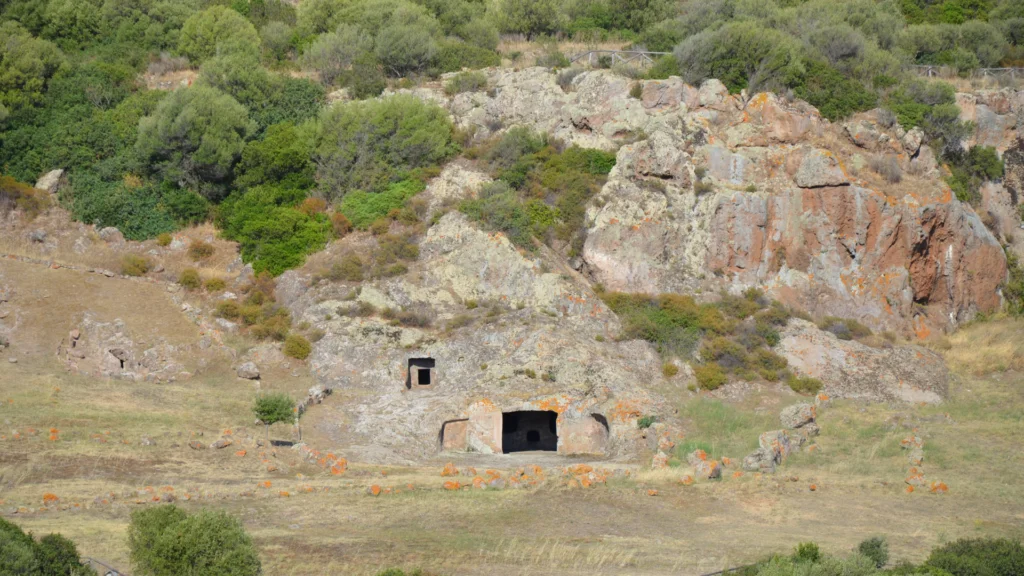

One of the largest in Sardinia, located in Villaperuccio, with about 40 domus de janas, where a guided tour is recommended to fully appreciate its history.
Necropolis of Filigosa
Known for giving its name to an important culture of the Sardinian Eneolithic period, located in Macomer with long access dromos characterizing the four domus.
Domus de Janas S’acqua ‘e is dolus
Situated in the countryside of Settimo San Pietro, this domus is tied to a popular legend attributing healing properties to the water that seeps into the tomb.
Origins and History
Ancient Civilizations of Sardinia
Before the nuraghi shaped the Sardinian landscape, the island was already a hub of human activity, a place where various cultures flourished and left their indelible mark on the land. The ancient civilizations of Sardinia, dating back to the Neolithic period, created a rich and diverse culture, where art, religion, and nature intertwined in an intricate and harmonious dance.
These early inhabitants, masters in the art of sculpture and pottery, birthed a unique and distinctive culture, creating monuments that still today bear witness to their deep connection with the land and their innovative spirit.
Evolution of the Domus de Janas Over Time
The Domus de Janas, these mysterious “Fairy Houses,” are a direct product of this ancient wisdom, a tangible example of how man, through the centuries, has managed to adapt and transform his environment to create structures that served not only as burial places but as true community life centers.
Over the centuries, these extraordinary structures have undergone a series of transformations, adapting to the changing needs and beliefs of the populations that used them. From simple tombs, they transformed into places of worship, shelters, and even prisons, always maintaining an intrinsic sacredness and a deep connection with the spiritual world.
Recent Archaeological Discoveries
In recent decades, Sardinia has become a veritable open-air laboratory for archaeologists and scholars eager to unveil the secrets of these ancient dwellings. Recent archaeological discoveries have shed new light on the Domus de Janas, revealing surprising details about their construction and the techniques used by the master craftsmen of the time.
These investigations have uncovered new sites and deepened the understanding of the funerary and ritual practices of the ancient Sardinian civilizations, offering an increasingly complete and fascinating view of a world that, although distant in time, continues to exert an unparalleled charm and inspire respect and admiration.
Architecture and Structure
Architectural Features
The Domus de Janas are a masterpiece of ancient engineering, a sublime example of how man can work in harmony with nature, using his hands to carve dwellings that served not only as final resting places but as true monuments to life and death. These structures, carved directly into the rock, feature a series of interconnected chambers, each with a specific function, thus outlining a sort of “house” that reflected the structure of the dwellings of the time.
The geometric precision and attention to detail are evident in every corner of these abodes, with carefully modeled entrances and interiors that show a deep understanding of advanced construction techniques. This architectural mastery not only highlights the skill of the ancient stonemasons but also emphasizes the sacredness and importance of these places in pre-Nuragic society.
Types of Domus de Janas
Exploring the different regions of Sardinia, one encounters a variety of Domus de Janas, each with its unique peculiarities. While some are simple and consist of a single cell, others develop into complex labyrinths of concentric rooms, offering a fascinating view of the cultural and spiritual diversity of the time.
Some of the most well-known types include:
- Single-chamber tombs: simple and austere, offering a peaceful and solemn resting place.
- Multi-chamber tombs: more complex structures, with various rooms dedicated to different rituals and functions.
- Decorated tombs: these tombs often feature engravings and bas-reliefs, adding a level of art and beauty to these already fascinating monuments.
Decorations and Symbolism
Entering a Domus de Janas, it is impossible not to be captivated by the intricate decorations that adorn walls and ceilings. These works of art, created with craftsmanship that defies time, tell stories of deities, nature, and everyday life, offering a profound insight into the beliefs and traditions of the time.
The most common symbols include representations of female deities, solar symbols, and geometric patterns, each with a deep meaning and a specific function. These decorations were not just aesthetically pleasing but served as tools to guide the deceased on their journey to the afterlife, acting as a bridge between the world of the living and that of the spirits.
Through these engravings, we can get closer to the ancient civilizations of Sardinia, understand their beliefs, and immerse ourselves in a world where art and religion merge into perfect harmony, creating an atmosphere of sacredness and mystery that continues to enchant visitors to this day.
Legends and Traditions
The Janas: Between Myth and Reality
In the intricate web of stories surrounding the Domus de Janas, the figures of the Janas hold a prominent place. These mythical creatures, often described as women of small stature but great beauty and wisdom, are the presumed inhabitants of these ancient dwellings. Oscillating between the real world and the supernatural, the Janas are considered guardians of ancient secrets and hidden treasures.
Their presence in Sardinian legends creates a deep connection between myth and reality, offering a vision of the world where the sacred and the mundane intertwine in a timeless dance. The stories that feature them often tell of magical encounters and precious gifts granted to those worthy of their benevolence.
Popular Stories and Tales
The popular narratives surrounding the Domus de Janas are a rich treasury of stories that have the power to transport listeners to a world of magic and mystery. These tales, passed down from generation to generation, speak of fairies and witches, of spells and curses, creating a narrative universe rich in symbolism and deep meanings.
Through these stories, visitors can immerse themselves in a world where the boundary between the real and the imaginary becomes increasingly thin, offering a unique perspective on the beliefs and traditions of a people who have kept their legends alive through the centuries.
The Connection Between Legends and Sardinian Culture
The legends enveloping the Domus de Janas are not just fantastical stories but represent a vital part of Sardinian culture. These stories, in fact, reflect the fears, hopes, and values of a community that has always lived in close contact with nature and the invisible forces that govern the world.
The deep connection between legends and Sardinian culture manifests in multiple ways, from music to dance, from poetry to art, creating a cultural mosaic that celebrates the richness and diversity of this enchanted land. Through the rediscovery of these traditions, we can approach the beating heart of Sardinia, a place where the past and present meet, giving life to a future where ancient legends continue to live, inspiring new generations to dream and create.

